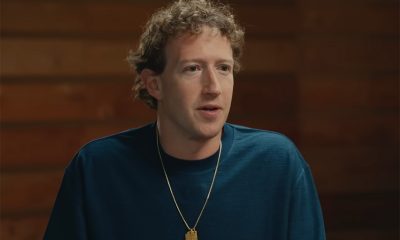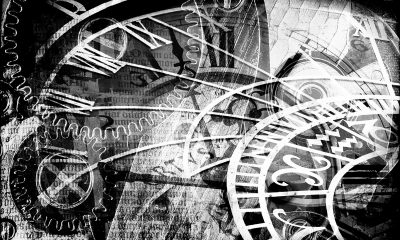a&e features
The overshadowed LGBT fight for ‘normality’
Upcoming doc examines protests against the American Psychiatric Association

Barbara Gittings, Frank Kameny and John Fryer, who’s in disguise. (Photo by Kay Tobin Lahusen via Wikimedia Commons)
For decades, the American Psychiatric Association (APA) labeled homosexuality a mental illness, thereby justifying the criminalization of homosexuality and permitting discriminatory practices against gay men and lesbians by government agencies, businesses, schools and churches repulsed by those branded “sick” and “perverted.”
But homosexuality was also believed to be a deviant behavioral choice that could be “cured” through medical and psychological treatments such as electroshock, chemical castration, ice pick lobotomies or aversion “therapy” akin to the torture in “A Clockwork Orange.”
Not all mental health professionals thought gay people were degenerates. In 1953, with Republican Sen. Joe McCarthy in his prime demagogically chasing down and destroying communists (the “Red Scare”) and homosexuals (the “Lavender Scare”), Evelyn Hooker, Ph.D., sought funding from the National Institute of Mental Health to research “normal homosexuals,” prompted by her close friendship with a former UCLA student, Sam From. Through him, she gained access to Los Angeles’s secret gay subculture and volunteers from the Mattachine Society. Hooker’s presentation at the APA’s annual convention in 1956 was groundbreaking — there was no scientific data on gay people who were not incarcerated or in mental wards. The result: expert clinicians could not distinguish between gay men and straight men, findings that were soon validated by other researchers.
But the APA did not remove homosexuality from its Diagnostic and Statistical Manual III until 1973. “Cured,” an in-production documentary directed by award-winning filmmakers Patrick Sammon and Bennett Singer, details the story of how LGBT activists joined forces with other minority groups and allies to take on the psychiatric establishment in the late 1960s and early 1970s to change the manual.
As befitted the time of upheaval with students protesting the war in Vietnam and civil rights groups morphing into liberation movements, the fights against the APA were not quiet. One of the first demonstrations was staged in San Francisco by 20 members of the Gay Liberation Front and Women’s Liberation Movements. “It put the psychiatrists on notice,” Sammon said, “that gays and lesbians were fighting back. It really was the start of the outside activism that put attention and pressure on this issue.”
From California, protests spread to other cities, such as Chicago and New York.
“The interesting thing about this is there was no coordinated strategy, in terms of one person deciding what would happen. It was a grassroots effort,” Sammon says. “That was an important piece of the equation that we discovered during the research process.”
But there were pioneering leaders with vision from Barbara Gittings of the New York chapter of the Daughters of Bilitis; Frank Kameny, co-founder with Jack Nichols of the Washington, D.C. branch of the Mattachine Society; and Morris Kight and Don Kilhefner, co-founders of the Gay Liberation Front/L.A., who disrupted APA conferences by stealing the emcee’s microphones and challenging the participants. In 1972, gay psychiatrist Dr. John Fryer had enough and spoke out, albeit with his face disguised in a mask and voice distorted over the microphone. Nonetheless, “Dr. Henry Anonymous,” as he presented himself, gave such as impactful speech, history has often credited him with getting homosexuality de-listed from the manual in 1973.
Sammon believes that much of the progress in the struggle for LGBT rights — for social, legal, and political equality — was made possible by this victory in 1973 over the APA. While still largely overlooked in LGBT history, the campaign challenging the APA represents a remarkable story of diligence and courage in the face of powerful institutional resistance.
Singer also notes that “Cured” looks at how the modern LGBT rights movement continued after Stonewall.
“How did the spark that was ignited at Stonewall and other uprisings around the country get channeled? What was the next stage of activism,” Singer says.
Sammon hopes older LGBT audiences will see an accurate reflection of their lived experiences, of the pain caused by the message from scientific and medical institutions that they were sick.
“If from the age of 12 or 13,” he told the Los Angeles Blade in a June 19 interview, “everything you read or everything you’re told is that you’re mentally ill, that starts to impact you. That starts to affect your self-esteem. It causes internalized homophobia.”
In the years since, leading organizations representing scientists and physicians have uniformly denounced treatments intended to change a patient’s sexual orientation or gender identity. More recent progress on this front includes the decision by the World Health Organization to remove gender incongruence from the mental disorders listed in its International Classification of Diseases (ICD), the 11th revision of which was released June 18.
However, despite this, disproven pseudo-scientific ideas about the mental health of LGBT people are still used to support so-called “conversion” or “reparative therapy,” religious-based counseling and other harmful sexual orientation change efforts (SOCE).
The campaign against the label of mental illness chronicled in “Cured” is not “a relic from history,” Singer says. “People are still clinging to this junk science that’s being held up to give LGBTQ people this bogus sense that they can change, that they should change and that homosexuality is a choice.”
Sammon agrees: “The roots of this mental illness label are ideas that are still parroted by people who believe in conversion therapy,” he says. “Hopefully, this film — while not specifically about that issue (of conversion therapy) — can help illuminate that ongoing discussion, while weakening this argument that LGBT people have chosen to be the way that they are.”
“There’s still a learning curve when it comes to these fundamental issues,” Singer says. “We’re seeing it with the attempt to roll back the Pentagon’s policy on trans service members, with ongoing opposition to marriage, with bathroom bills … many of these positions come from prejudice based on junk science and religious belief.”
“Cured” is a warning that the fight for equality is ongoing, that progress can be ephemeral. It’s also an homage to the activists who sacrificed much but recognized the importance of the fight.
“I hope older audiences, through the film, will receive some appreciation for the work they did to get us to the point where we are now,” Sammon says. “There are so many people who helped in so many ways, and this is a way to honor them.”
Charles Francis, president of the Mattachine Society of Washington, told the L.A. Blade that they decided to sign on as financial sponsors of “Cured” because the film debunks the myth that the LGBT community has won the battle against those who wish to call them mentally ill.
“It’s a myth,” Francis says, “because not only was it hell to accomplish this thing (striking homosexuality from the manual), with real community activism, but even today the debate is not over. Our enemies are making the case they we are somehow spiritually or psychologically broken, even now in 2018.”
At the Mattachine Society, Francis is engaged in historical research about the institutionalization of LGBT people in places like St. Elizabeth’s hospital in Washington, where the APA’s mental illness label and legislation like the District’s Sexual Psychopath Act of 1948, resulted in people being subjected to “treatments” that included icepick lobotomies, hysterectomies, and castration.
Even today, Francis warns, mythical ideas about LGBT mental illness have lead to young LGBT people being put in harm’s way. Among the most troubling recent examples are reports of young people who have died as a result of abuse incurred at residential programs associated with the billion dollar “troubled teen industry,” a sexual orientation change effort into which youth are sometimes enrolled by their parents.
“This movie is not just for gay history geeks,” Francis says. “I think all activists, all audiences, all people concerned with the Trump-Pence Administration would do well to see this movie and to see how old school community activism works. Getting out into the streets, into the communities, convincing people, making the arguments…this is an early example of passionate, community-based activism. I think it’s a movie for everybody, especially in these challenging times.”
After its 1973 decision, the APA came out against discrimination based on sexual orientation in employment (1988) and in the armed forces (1990). Then, in 1998, the organization issued statements that opposed psychiatric treatments that are based on the view of homosexuality as a mental disorder and are administered to “change” the patient’s sexual orientation.
The mainstream medical establishment is now allied with efforts to protect young LGBT people from conversion therapy, which marks a significant step forward. Interestingly, science and medicine have recently been harnessed to oppose these practices from a different angle.
A bill spearheaded by Equality California and introduced by out Assembly member Evan Low would include, among the business practices outlawed under California’s Consumer Legal Remedies Act, the sale of therapies that constitute sexual orientation change efforts because research indicates they are ineffective.
“The bill does one thing and one thing only” says Low, in a press release. “It declares conversion therapy (for money) for what is, a fraudulent practice.”
The directors hope to release “Cured” in 2019, the 50th anniversary of the Stonewall Riots.
a&e features
Creator Max Mutchnick on inspirations for ‘Mid-Century Modern’
Real-life friendships and loss inform plot of new Hulu show
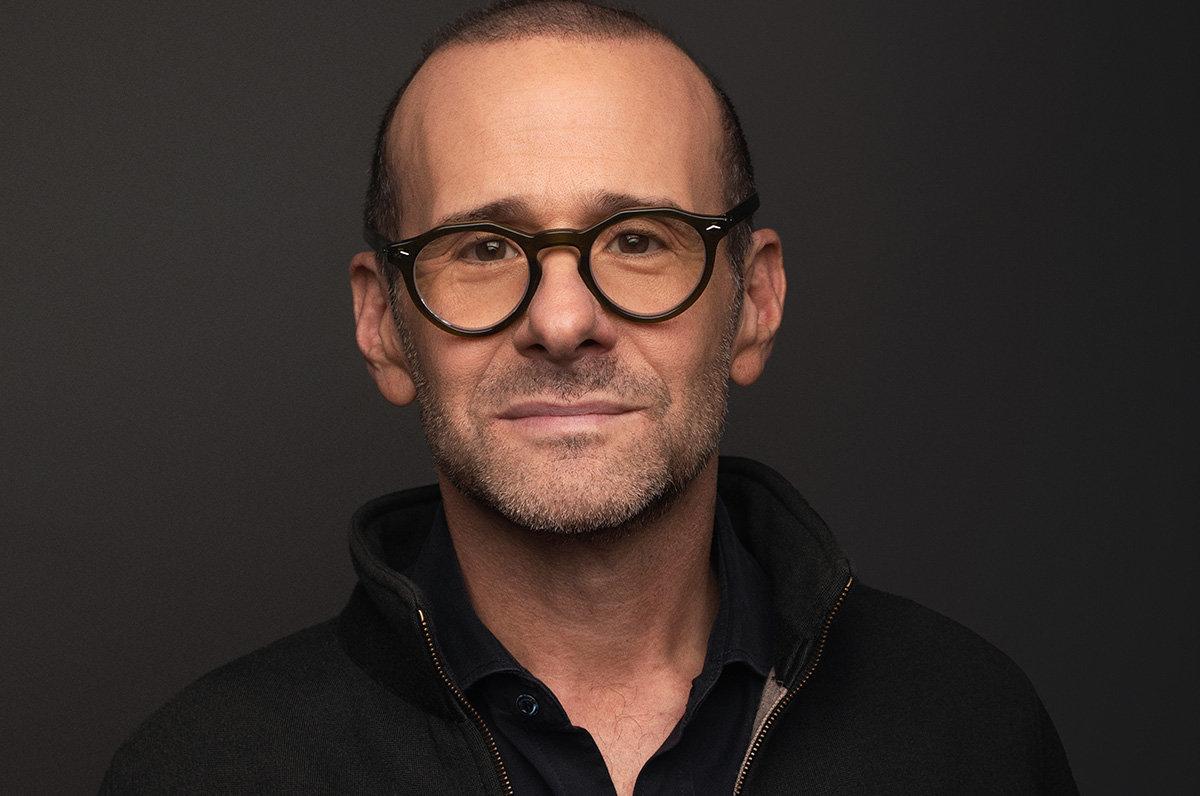
It’s been a long time – maybe 25 years when “Will & Grace” debuted – since there’s been so much excitement about a new, queer sitcom premiering. “Mid-Century Modern,” which debuted on Hulu last week, is the creation of Max Mutchnick and David Kohan, the gay men who were also behind “Will & Grace.”
Set in Palm Springs, Calif., following the death of the one of their closest friends, three gay men gather to mourn. Swept up in the emotions of the moment, Bunny (Nathan Lane) suggests that Atlanta-based flight attendant Jerry (Matt Bomer) and New York-based fashion editor Arthur (Nathan Lee Graham) move into the mid-century modern home he shares with his mother Sybil (the late Linda Lavin). Over the course of the first season’s 10 episodes, hilarity ensues. That is, except for the episode in which they address Sybil’s passing. The three male leads are all fabulous, and the ensemble cast, including Pamela Adlon as Bunny’s sister Mindy, and the stellar line-up of guest stars, such as Jesse Tyler Ferguson, Vanessa Bayer, Richard Kind, and Cheri Oteri, keep humor buzzing. Shortly before the premiere of “Mid-Century Modern,” Mutchnick made time for an interview with the Blade.
BLADE: I’d like to begin by saying it’s always a delight to speak to a fellow Emerson College alum. In ways would you say that Emerson impacted your professional and creative life?
MAX MUTCHNICK: I think Emerson was the first place that reflected back to me that my voice, my thoughts were good, and they were worth listening to. I developed a confidence at Emerson that did not exist in my body and soul. It was a collection of a lot of things that took place in Boston, but I mean we can just put it all under the Emerson umbrella.
BLADE: Before “Will & Grace,” you co-created the NBC sitcom “Boston Common,” which starred fellow Emerson alum Anthony Clark. Is it important for you to maintain those kinds of alumni relationships?
MUTCHNICK: Because Emersonians are such scrappy little monkeys and they end up being everywhere in the world, you can’t help but work with someone from Emerson at some point in your career. I’m certainly more inclined to engage with someone from Emerson once I learn that they went to my alma mater. For me, it has much more to do with history and loyalty. I don’t think of myself as one of those guys that says, “Loyalty means a lot to me. I’m someone that really leans into history.” It’s just what my life and career turned out to be. The longer I worked with people and the more often I worked with them, the safer that I felt, which means that I was more creative and that’s the name of the game. I’ve got to be as comfortable as possible so I can be as creative as possible. If that means that a person from Emerson is in the room, so be it. (Costume designer) Lori Eskowitz would be the Emerson version. And then (writer and actor) Dan Bucatinsky would be another version. When I’m around them for a long time, that’s when the best stuff comes.
BLADE: Relationships are important. On that subject, your new Hulu sitcom “Mid-Century Modern” is about the longstanding friendship among three friends, Bunny (Nathan Lane), Jerry (Matt Bomer), and Arthur (Nathan Lee Graham). Do you have a friendship like the one shared by these three men?
MUTCHNICK: I’m absolutely engaged in a real version of what we’re projecting on the show. I have that in my life. I cannot say that I’m Jerry in any way, but the one thing that we do have in common is that in my group, I’m the young one. But I think that that’s very common in these families that we create. There’s usually a young one. Our culture is built on learning from our elders. I didn’t have a father growing up, so maybe that made me that much more inclined to seek out older, wiser, funnier, meaner friends. I mean the reason why you’re looking at a mouthful of straight, white teeth is because one of those old bitches sat across from me about 25 years ago at a diner and said, “Girl, your teeth are a disaster, and you need to get that fixed immediately.” What did I know? I was just a kid from Chicago with two nickels in my pocket. But I found three nickels and I went and had new teeth put in my head. But that came from one of my dearest in the group.
BLADE: Do you think that calling “Mid-Century Modern” a gay “Golden Girls” is a fair description?
MUTCHNICK: No. I think the gay “Golden Girls” was really just used as a tool to pitch the show quickly. We have an expression in town, which is “give me the elevator pitch,” because nobody has an attention span. The fastest way you can tell someone what David (Kohan) and I wanted to write, was to say, “It’s gay Golden Girls.” When you say that to somebody, then they say, “OK, sit down now, tell me more.” We did that and then we started to dive into the show and realized pretty quickly that it’s not the gay “Golden Girls.” No disrespect to the “Golden Girls.” It’s a masterpiece.
BLADE: “Mid-Century Modern” is set in Palm Springs. I’m based in Fort Lauderdale, a few blocks south of Wilton Manors, and I was wondering if that gay enclave was ever in consideration for the setting, or was it always going to be in Palm Springs?
MUTCHNICK: You just asked a really incredible question! Because, during COVID, Matt Bomer and I used to walk, because we live close by. We had a little walking group of a few gay gentlemen. On one of those walks, Matt proposed a comedy set in Wilton Manors. He said it would be great to title the show “Wilton Manors.” I will tell you that in the building blocks of what got us to “Mid-Century Modern,” Wilton Manors, and that suggestion from Matt Bomer on our COVID walks, was part of it.
BLADE: Is Sybil, played by the late Linda Lavin, modeled after a mother you know?
MUTCHNICK: Rhea Kohan (mother of David and Jenji). When we met with Linda for the first time over Zoom, when she was abroad, David and I explained to her that this was all based on Rhea Kohan. In fact, some of the lines that she (Sybil) speaks in the pilot are the words that Jenji Kohan spoke about her mother in her eulogy at the funeral because it really summed up what the character was all about. Yes, it’s very much based on someone.
BLADE: The Donny Osmond jokes in the second episode of “Mid-Century Modern” reminded me of the Barry Manilow “fanilows” on “Will & Grace.” Do you know if Donny is aware that he’s featured in the show?
MUTCHNICK: I don’t. To tell you the truth, the “fanilow” episode was written when I was not on the show. I was on a forced hiatus, thanks to Jeff Zucker. That was a show that I was not part of. We don’t really work that way. The Donny Osmond thing came more from Matt’s character being a Mormon, and also one of the writers. It’s very important to mention that the writing room at “Mid-Century Modern,” is (made up of) wonderful and diverse and colorful incredible humans – one of them is an old, white, Irish guy named Don Roos who’s brilliant…
BLADE: …he’s Dan Bucatinsky’s husband.
MUTCHNICK: Right! Dan is also part of the writing room. But I believe it was Don who had a thing for Donny, and that’s where it comes from. I don’t know if Donny has any awareness. The only thing I care about when we turn in an episode like that is I just want to hear from legal that we’re approved.
BLADE: “Mid-Century Modern” also includes opportunities for the singers in the cast. Linda Lavin sang the Jerome Kern/Ira Gershwin tune “Long Ago (And Far Away)” and Nathan Lane and the guys sang “He Had It Coming” from “Chicago.” Was it important to give them the chance to exercise those muscles?
MUTCHNICK: I don’t think it was. I think it really is just the managers’ choice. David Kohan and I like that kind of stuff, so we write that kind of stuff. But by no means was there an edict to write that. We know what our cast is capable of, and we will absolutely exploit that if we’re lucky enough to have a second season. I have a funky relationship with the song “Long Ago (And Far Away).” It doesn’t float my boat, but everybody else loved it. We run a meritocracy, and the best idea will out. That’s how that song ended up being in the show. I far prefer the recording of Linda singing “I’ll Be Seeing You” over her montage in episode eight, “Here’s To You, Mrs. Schneiderman.” We were just lucky that Linda had recorded that. That recording was something that she had done and sent to somebody during COVID because she was held up in her apartment. That’s what motivated her to make that video and send it. That’s how we were able to use that audio.
BLADE: Being on a streaming service like Hulu allows for characters to say things they might not get away with on network TV, including a foreskin joke, as well as Sybil’s propensity for cursing.
MUTCHNICK: And the third line in the show is about him looking like a “reluctant bottom.” I don’t think that’s something you’re going to see on ABC anytime soon. David and I liked the opportunity to open up the language of this show because it might possibly open the door to bringing people…I’m going to mix metaphors…into the tent that have never been there before. A generation that writes off a sitcom because that language and that type of comedy isn’t the way that they sound. One of the gifts of doing this show on Hulu is that we get to write dialogue that sounds a little bit more like you and I sound. As always, we don’t want to do anything just to do it.
BLADE: It didn’t feel that way.
MUTCHNICK: It’s there when it’s right. [Laughs] I want to have a shirt made with Linda’s line, as her mother always used to say, “Time is a cunt.”
BLADE: “Mid-Century Modern” also utilizes a lot of Jewish humor. How important is it for you to include that at this time when there is a measurable rise in anti-Semitism?
MUTCHNICK: I think it’s important, but I don’t think it’s the reason why we did it. We tried very hard to not write from a place of teaching or preaching. We really are just writing about the stuff that makes us laugh. One of the things that makes something better and something that you can invest in is if it’s more specific. We’re creating a character whose name is Bunny Schneiderman and his mother’s name is Sybil and they made their money in a family-run business, it gets Jewy, and we’re not going to shy away from it. But we’re definitely not going to address what’s going on in the world. That doesn’t mean I don’t find it very upsetting, but I’m writing always from the point of view of entertaining the largest number of people that I can every week.
BLADE: “Mid-Century Modern” has a fantastic roster of guest stars including Jesse Tyler Ferguson, Vanessa Bayer, Billie Lourd, Cheri Oteri, Richard Kind, Rhea Perlman, and Judd Hirsch. Are there plans to continue that in future seasons?
MUTCHNICK: Yes. As I keep saying, if we’re so lucky that we get to continue, I don’t want to do “The Love Boat.” Those are fine comic actors, so I don’t think it feels like that. But if we get to keep going, what I want to do is broaden the world because that gives us more to write about. I want to start to introduce characters that are auxiliary to the individuals. I want to start to meet Arthur’s family, so we can return to people. I want to introduce other neighbors, and different types of gay men because we come in so many different flavors. I think that we should do that only because I’m sure it’s what your life is and it’s what my life is. I’ve got a lot of different types. So, yes, we will be doing more.
BLADE: Finally, Linda Lavin passed away in December 2024, and in a later episode, the subject of her character Sybil’s passing is handled sensitively, including the humorous parts.
MUTCHNICK: We knew we had a tall order. We suffered an incredible loss in the middle of making this comedy. One of the reasons why I think this show works is because we are surrounded by a lot of really talented people. Jim Burrows and Ryan Murphy, to name two. Ryan played a very big role in telling us that it was important that we address this, that we address it immediately. That we show the world and the show goes on. That wasn’t my instinct because I was so inside the grief of losing a friend, because she really was. It wasn’t like one of those showbizzy-type relationships. And this is who she was, by the way, to everybody at the show. It was the way that we decided to go. Let’s write this now. Let’s not put this at the end of the season. Let’s not satellite her in. Let’s not “Darren Stevens” the character, which is something we would never do. The other thing that Jim Burrows made very clear to us was the import of the comedy. You have to write something that starts exactly in the place that these shows start. A set comedy piece that takes place in the kitchen. Because for David and me, as writers, we said we just want to tell the truth. That’s what we want to do with this episode and that’s the way that this will probably go best for us. The way that we’ve dealt with grief in our lives is with humor. That is the way that we framed writing this episode. We wanted it to be a chapter from our lives, and how we experience this loss and how we recover and move on.
a&e features
Margaret Cho returns to music with ‘Lucky Gift’
Collection of pop tunes includes tribute to non-binary people
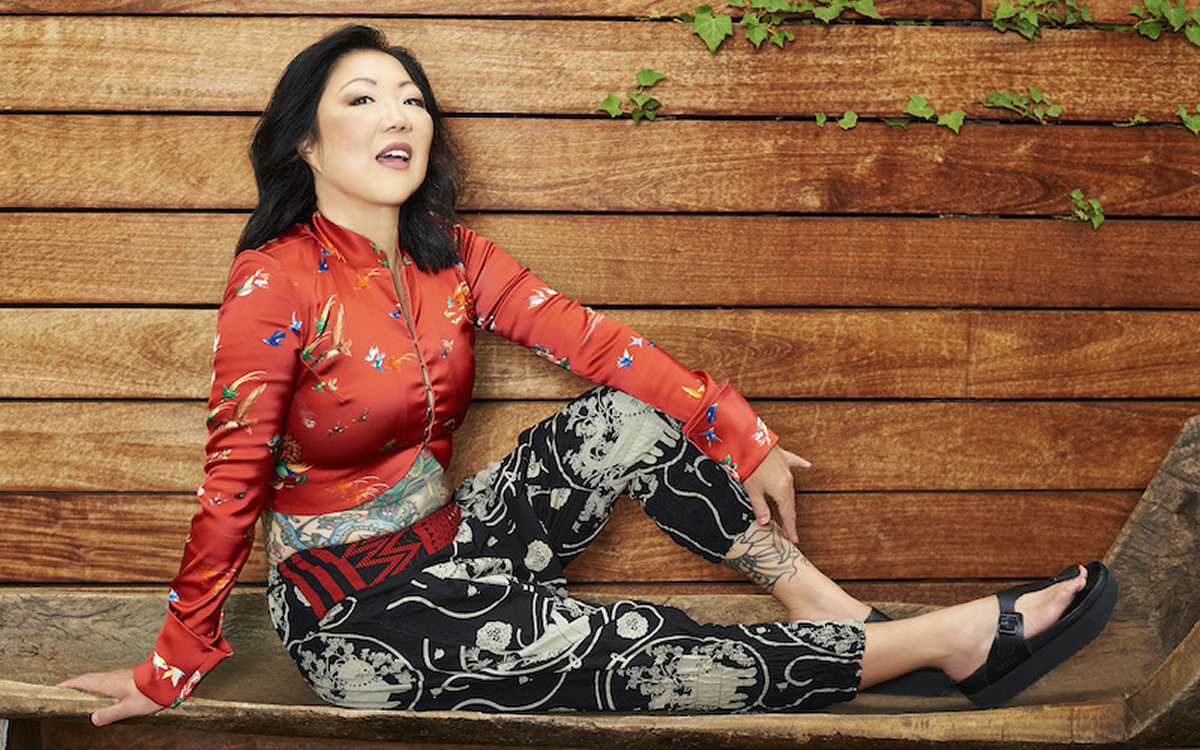
LOS ANGELES — It has been eight years since Margaret Cho released her Grammy-nominated “American Myth” album. She’s back to the music scene with her new album, “Lucky Gift,” an 11-track collection of anthems and pop tunes, a tribute to Robin Williams, and a shout-out to non-binary and gender non-conforming people.
The album captures the whirlwind that is Margaret and all of the different facets of her talents that have made her a powerhouse in entertainment and a leader in activism. In “Lucky Gift,” she’s getting her point across while having fun and getting glam.
We caught up with the activist and artist to chat about her music, our political climate, and the power of pop divas.
Known for her comedy, acting, and activism, she felt it was long overdue to get her music back out there too.
“I make music often. It’s a part of my daily life, it’s a big part of my social life, and it’s just something that I just love to do for my own relaxation and fun. I had enough for an album and I wanted to finally put them out. I was just really proud of how it all sounded together,” shares Cho.
“It’s a power pop record. For me, the songs are really meaningful. They’re all in their own way love songs. I’m a big fan of my own music (laughs), I really like the way that I sound and it’s really special to do. People know me as a comedian, and I have also made music for a long time, but it’s sort of a side project, and so it was time to put more out again.”
Her album also includes a touching tribute to Robin Williams. The entertainment community is finally more comfortable talking about mental health more openly. When relating mental health to her own life, Margaret, in true Margaret form, quickly turned the conversation to reflect today’s political climate.
“I have to maintain a level of peace and quiet and sometimes maybe get away from the news, although that’s tough because I am obsessed. I want to know what is happening. I’m really worried for our community, especially the trans community. I’m worried that this administration is trying to separate T and the Q from the LGBTQIA, and it’s really frightening.”
As an elder, Cho says she has to also remember that we’ve been through this before and it’s actually been much worse. As a community, we’ve been through a similar situation, and we were facing down a pandemic, which was killing us by the millions. So at least now we don’t have to fight AIDS as well as this onslaught of homophobia.
“We have fought for our rights, and we still have them, but we may not have them for long. So our mental health is very important to preserve now because we have to fight. The one thing to remember is they can’t do everything at once. They can’t take away trans rights, queer rights, gay rights, gay marriage, anti-depressants —ha — at the same time. So what we can do is just try to remain as calm as possible and fight as strongly as we can. But yeah, mental health is really vitally important right now.”
Margaret’s long history of queer activism stands for itself. She does not shy away from current issues, she uses her platforms to incite, educate, and question. For Margaret, there is no time off from being an activist. She was born into it, so to speak, being raised in San Francisco in the 1970s, her parents — the owners of a gay bookstore — and their employees followers of Harvey Milk.
“My activism is that I don’t have a choice. I’m going to be an activist no matter what. We’re doing this together, we’re going through this together. I will always be political. It’s just disheartening to see the ignorance of people and the lies that are being told that are believed.”
Margaret’s “Lucky Gift” comes at a perfect time when the queer community can come together over music. Cho looks at her album as a tool to empower an underdog community through the power of music.
“It’s the triumph of pop above all. We need to look to our pop divas above all. So now I’m more than ever, leaning on Madonna. [Thank God for Lady Gaga’s] “Abracadabra” because I think that things like that boost our community so much. When you can just get together and have a “brat summer,” that boosts our community so much in this togetherness, this explosion of excitement. I think Chappell Roan really ignited the pop capacity for healing. I love ‘Lucky Gift’ because it is my stepping into a pop diva moment. Pop divas should not be discounted for how important they are to our society and how much they lift us up.”
In addition to releasing her new album, Cho will continue to hit the road this year with her “Live and LIVID! Tour,” celebrating more than four decades of live stand-up shows. On this tour, she promises to rage about homophobia, sexism, racism, and the fight to stay alive. The five-time Grammy and Emmy-nominated performer is not holding back. According to her, the nation is not divided, just a little lost.
“We’re not divided. Everybody hates this. We all hate this. The fact is, the majority of the country does not want this. Unfortunately, a lot of people just didn’t vote because they just didn’t want to participate. That’s why we’re in the situation that we’re in. So to be on the road is a pleasure. And I rarely come against opposition. Every once in a while there’s something, but it’s something that we all handle. I think we all need a voice, a strong voice of reason to combat all of the hysteria.”
And her message to her fans?
“We’ll get through this. We’ll get through this with pop divas. ‘Abracadabra,’ learn the choreography, you do it sitting down. At least we have pop music, I have my hat in the ring here. But at least we have each other and we’re going to be OK. It’s going to be a ride, it’s going to be intense, but we can do this. We’ve been through this before and we are going to be fine.”
“Lucky Gift”is now available on all major streaming platforms.
a&e features
Meet the people giving a voice to LGBTQ truck drivers
‘Like therapy,’ finding solace in each other and the road
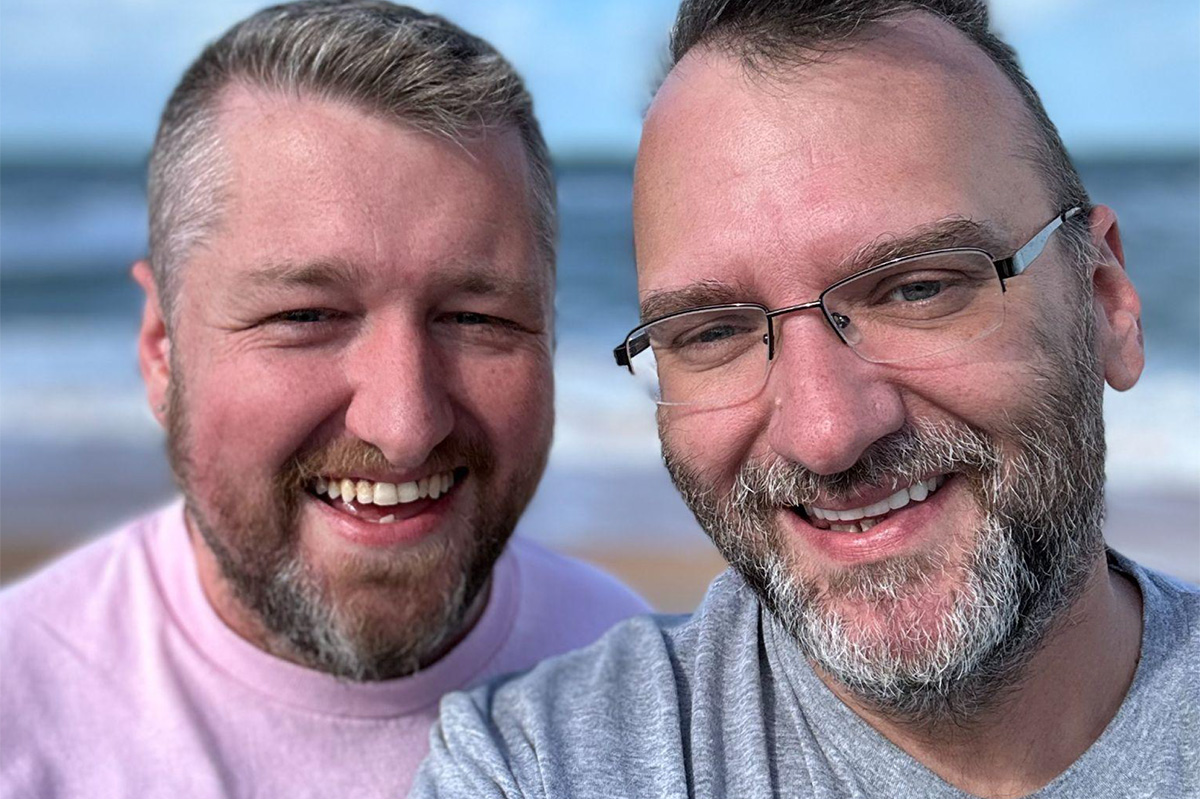
Before embarking on his weekly 2,000-mile trip as a truck driver, Derric Schmid sets up his smart TV and preps meals in bulk like ham and potatoes.
To some, long hours on the road away from family and friends sounds grueling. But for Schmid, it’s his way of life.
“I love the freedom,” Schmid said. “I get paid to go see the country. I’ve spent New Year’s Eve in New Orleans, I’ve spent it in St. Louis and this year I spent Christmas out in California exploring.”
Schmid is the vice president and senior diversity officer of LGBTQ+ Truck Driver Network (TDN), a nonprofit he runs with founder Bobby Coffey-Loy. TDN aims to foster inclusivity and safety in the truck driving industry by building a supportive network of allies and queer truckers.
The organization vets companies (Schmid says he calls 50-100 per week) to understand which are committed to creating safe spaces for drivers of all backgrounds. Schmid and Coffey-Loy also host the Big Gay Trucker Podcast, where they interview people who need advice or want to discuss taboo topics.
Coffey-Loy said meeting people from different walks of life, including trans people recovering from surgeries while on the road, inspired him to create TDN.
“It just opened me up to a whole group of people that just needed representation,” Coffey-Loy said. “There are groups out there on [social media] pages, but nobody actually took it as far as a nonprofit organization.”
Coffey-Loy drives with his partner of 17 years, Ricky, for a company called Luna Lines. Together they drive about 6,000 miles a week, taking turns sleeping or keeping one another company. On Monday, they typically start a load in Jacksonville and then drive to New Mexico, Chicago, Baltimore, Tennessee and end up back home in Palm Coast, Fla., by Friday. They even pay for all their gas and food while on the road.
Doing a weekly cross-country road trip in tight quarters with your partner can be trying, and Coffey-Loy will be the first to admit that: “Your partner is someone that knows how to push your buttons faster than anybody else,” he laughed.
But he also said starting truck driving together eight years ago is what made him and his husband closer. Before driving, he said it felt like life and jobs sometimes got in the way of their relationship. Going to trucking school together and being able to support each other on the road over the years has sparked a different kind of connection in their lives.
“We didn’t want to be apart from each other, so that’s what made trucking work for us,” he said.
For both Schmid and Coffey-Loy, truck driving runs in the family. Schmid, who’s been driving trucks for almost 24 years and with TDN for more than two, calls Jonestown, Pa., home –– a borough with a 2023 population of 1,645. He had three uncles and a grandfather who were truck drivers.
Coffey-Loy, born and raised in West Virginia, said his father and grandfather were truck drivers.
Continuing family tradition is respectable enough, but Coffey-Loy’s mission of creating a safe and supportive space for those in the industry was unique; it was difficult for his parents to accept his identity when he first came out.
Coffey-Loy’s parents passed away 11 months apart last year. He said they learned to grow to love him for who he was. When TDN started up, they became “mom and dad to everyone,” and even invited people with no familial structure to move in with them.
At get-togethers, his dad called everyone “sweetie” or “honey” to be respectful since he didn’t know how everyone identified.
“What they’ve taught me is, if they can change their mind and they can accept everybody, anybody can,” Coffey-Loy said. “I will cherish it forever. I miss them every day.”
And the impact of this lesson has been tried and true. TDN attended the Mid-America Trucking Show despite receiving death threats and facing extra security measures –– yet they ran through dozens of handouts before their station even opened. Another year, they handed out condoms to promote safe sex on the road and were met with backlash –– yet they went through a whole box on the first day.
The team behind TDN may be small –– about eight people –– but Schmid said their reach is wide. Thousands of people visit their social media pages from around the world and connect with each other, including a vocal German bus driver and a man from Africa trying to create more queer visibility in his area.
Coffey-Loy said many people contact him directly for support. There was a straight man who called who had trouble balancing his home life and truck driving hours and expressed suicidal thoughts. The man said he saw Coffey-Loy’s number and needed someone to talk to.
Moments like those are why Coffey-Loy emphasizes that the organization is there to support everyone, not solely the LGBTQ community. He recalled a bonfire gathering where people of different backgrounds and identities laughed and talked as friends.
“It’s why you do what you do,” Coffey-Loy said.
Although TDN has given many people a family away from home, it doesn’t make losing time with family and friends any easier. Coffey-Loy missed a family member’s funeral in West Virginia because he was in New Mexico and couldn’t abandon his load.
“He had already been buried before I could get back,” he said.
It’s a different way of life, but it’s not an impossible one. Schmid calls his mom and stepfather every morning and his mom again in the evenings. He gets on group calls with friends and TDN members. On weekends, Schmid sees some friends in person for dinners, and is able to visit with his family.
Truck driving may mean frequently saying goodbye to close people in his life, but it also opens the door to new connections around the country: “I got friends in every state,” Schmid said.
Although he’s constantly traveling, Coffey-Loy always feels at home. It’s those nights driving, with nothing but the roaring hum of the road filling the silence while his husband sleeps behind him, that fulfill him.
“Even though you miss so much of your everyday life, there’s something about trucking that is so freeing,” Coffey-Loy said. “The road can be so loud in your life, and it has a way to really sort out things. It’s like therapy for me.”
-
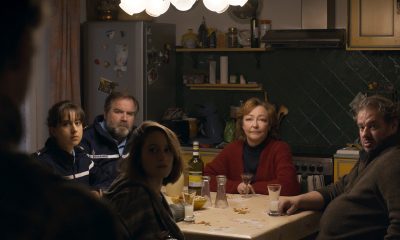
 Movies4 days ago
Movies4 days agoSexy small town secrets surface in twisty French ‘Misericordia’
-

 The White House2 days ago
The White House2 days agoUSCIS announces it now only recognizes ‘two biological sexes’
-
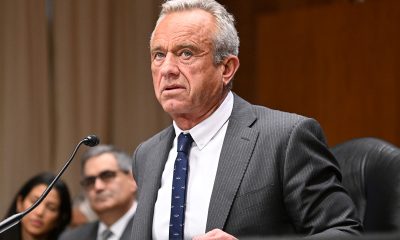
 Federal Government5 days ago
Federal Government5 days agoMass HHS layoffs include HIV/AIDS prevention, policy teams
-

 Africa5 days ago
Africa5 days agoReport: Anti-LGBTQ discrimination has cost East African countries billions

